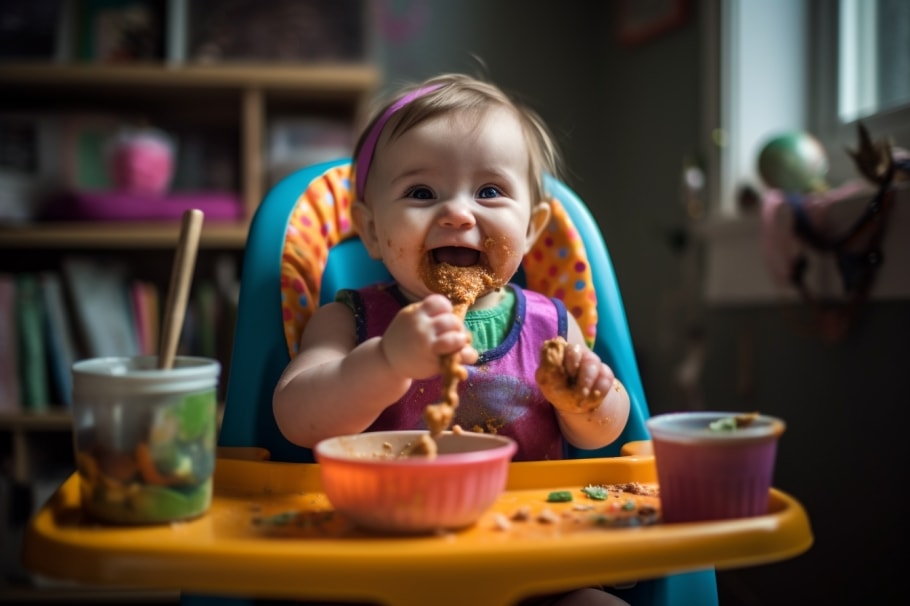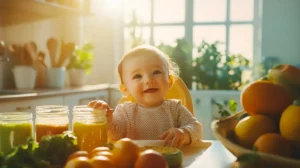Table of Contents
ToggleBaby Safety 101: How to Keep Your Little One Safe at Home
Welcome to Baby Safety 101: How to Keep Your Little One Safe at Home. As a parent, the safety of your baby is of utmost importance. However, it can be overwhelming to know where to begin when it comes to baby-proofing your home and ensuring your baby’s safety.
According to the Centers for Disease Control and Prevention (CDC), unintentional injuries are the leading cause of death in children aged 0-19. In fact, every year, millions of children are treated in emergency departments for non-fatal injuries.
As a top-selling woman blogger and author, I understand the importance of providing parents with valuable information to keep their babies safe. That’s why in this article, I will be sharing everything you need to know about baby safety at home, including how to create a safe sleeping environment, baby-proofing your home, preventing accidents in the bathroom and kitchen, and fire safety.
So, whether you are a first-time parent or a seasoned veteran, this article will provide you with the information you need to keep your little one safe at home. Let’s get started!

Creating a Safe Sleeping Environment
One of the most important things you can do to keep your baby safe at home is to create a safe sleeping environment. Sudden Infant Death Syndrome (SIDS) is a leading cause of death among infants, and it’s important to take steps to reduce the risk of SIDS and other sleep-related accidents.
1. Choose the Right Crib
When it comes to choosing a crib, safety should be your top priority. Make sure the crib meets current safety standards and has a firm, flat mattress that fits snugly in the crib. Avoid using bumper pads, which can pose a suffocation risk, and make sure the crib is free of any loose or soft bedding.
2. Position Your Baby Correctly
Always place your baby on their back to sleep, even for naps. This reduces the risk of SIDS and other sleep-related accidents. Keep your baby’s head and face uncovered, and avoid using blankets or other items that could cover their face and increase the risk of suffocation.
3. Keep the Sleeping Area Safe
The area around your baby’s sleeping area should be free of any hazards, such as loose cords or wires. Keep all pillows, blankets, and stuffed animals out of the crib, as these items can pose a suffocation risk. Make sure the room is a comfortable temperature and that your baby is dressed appropriately for the weather.
4. Share Your Room, Not Your Bed
The American Academy of Pediatrics recommends that parents share a room with their baby for at least the first six months, but not the same bed. Sleeping in the same bed as your baby can increase the risk of suffocation and SIDS. Instead, use a separate sleep surface, such as a bassinet or co-sleeper, that is close to your bed.
5. Breastfeed Your Baby
Studies have shown that breastfeeding can reduce the risk of SIDS. Breastfeeding also provides your baby with essential nutrients and helps strengthen their immune system.
By taking these steps to create a safe sleeping environment, you can reduce the risk of SIDS and other sleep-related accidents and help ensure your baby gets a safe and restful night’s sleep.




Baby-Proofing Your Home
When it comes to baby-proofing your home, it’s important to remember that babies are curious and can get into everything. Before your baby is born, it’s a good idea to take a walk around your home and identify potential hazards. Here are some tips on how to baby-proof your home:
Secure Furniture and Appliances
- Secure furniture and appliances: Large furniture items, such as bookcases and dressers, can tip over and cause serious injury to your baby. Make sure to secure these items to the wall with brackets or straps.
- Cover sharp edges: Sharp edges on tables, countertops, and other furniture can be dangerous for babies who are learning to crawl and walk. Use corner guards to cover these sharp edges.
- Keep appliances out of reach: Appliances, such as blenders and toasters, can be dangerous for babies. Keep them out of reach or store them in cabinets with childproof locks.
Install Safety Gates and Locks
- Install safety gates: Safety gates are essential for blocking off areas of your home that are not safe for babies. Install gates at the top and bottom of staircases, and in doorways to rooms that contain potential hazards.
- Lock cabinets and drawers: Use childproof locks on cabinets and drawers to keep babies from getting into dangerous items, such as cleaning supplies and sharp objects.
- Secure windows and doors: Use window locks and door alarms to prevent babies from opening windows and doors and potentially falling or wandering out of the house.
Eliminate Choking Hazards
- Remove small objects: Small objects, such as coins and buttons, can be choking hazards for babies. Keep these items out of reach and off the floor.
- Check toys: Make sure that any toys you give your baby are appropriate for their age and do not have small parts that could be a choking hazard.
- Avoid certain foods: Some foods, such as hot dogs, grapes, and popcorn, can be choking hazards for babies. Avoid giving these foods to your baby until they are old enough to handle them safely.
By taking these steps to baby-proof your home, you can create a safe environment for your little one to explore and grow in.
Conclusion
Caring for a baby is a big responsibility, but by following these baby safety tips, you can ensure that your little one is safe and secure at home. Remember to always choose a safe and sturdy crib, keep it bare, and place it in a safe location away from any hazards. Additionally, baby-proofing your home and keeping a watchful eye on your little one will go a long way in ensuring their safety.
While accidents can happen, by taking these precautions, you can minimize the risk and help keep your baby safe and healthy. Don’t forget to also consult with your pediatrician for any additional safety tips specific to your baby’s needs. By staying informed and proactive, you can create a safe and happy environment for your little one to grow and thrive.
- Always supervise your baby when they are in the crib, and never leave them unattended.
- Regularly check the crib for any loose or broken parts, and make sure it meets current safety standards.
- Keep soft objects and loose bedding out of the crib, and avoid using sleep positioners or crib bumpers.
- Make sure your baby’s sleeping area is free of any potential hazards, such as cords, blinds, or wall hangings.
- Install safety gates, cabinet locks, and outlet covers to baby-proof your home and prevent accidents.
By taking the time to create a safe sleeping environment, choosing the right crib, and baby-proofing your home, you can help protect your little one from harm and enjoy the joys of parenthood with peace of mind.
Want to take your knowledge to the next level? Check out these must-read articles:
- The Importance of Nutrition in Baby Development: What to Feed Your Growing Baby
- The Best Baby Gear: How to Choose the Right Equipment for Your Little One
Organize your baby’s wardrobe with our baby clothes closet organizer products! Our organizers are designed specifically for baby clothes. Get your baby’s clothes neat and tidy with our selection of organizers – shop now!
Step into Sue Brown's World of Baby Care, where you'll find a treasure trove of knowledge and wisdom waiting to be explored. Sue's dedication to providing accurate and up-to-date information on baby care shines through in every article, blog post, and resource she shares. From newborn essentials to sleep training tips, breastfeeding advice to nurturing your baby's development, Sue covers a wide range of topics that are essential for every parent to know. Her warm and compassionate approach creates a sense of community and reassurance, making her website a safe haven for parents seeking guidance and support. Let Sue Brown be your partner in this beautiful journey of parenthood, as she empowers you to create a loving, nurturing, and thriving environment for your little one.
- Embracing Toy Minimalism: Quality Over Quantity - June 30, 2025
- The Nap Transition Guide: Navigating Changing Sleep Needs - June 29, 2025
- Baby Skincare Simplified: Evidence-Based Approaches - June 28, 2025
Other Great Posts:
- Everything You Need to Know About Breastfeeding at Night
- Zipadee Zip vs Nested Bean Zen Sleep Sack – Which Is Best for Better Sleep?
- Returning to Work or School After Having a Baby: How to Balance Your Responsibilities
- The Challenge of Baby’s First Holidays: How to Celebrate and Keep Development on Track



